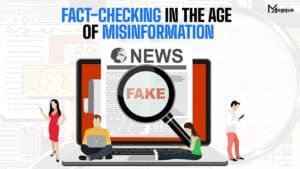Unlocking Transparency: How Blockchain is Revolutionizing Journalism
In a world fueled by information, the credibility of news has become more critical than ever. Enter blockchain, a game-changer in journalism, promising a paradigm shift towards trust and transparency. Let’s explore blockchain and journalism’s fascinating intersection, understanding how this technology reshapes the news landscape.
The Trust Deficit in Journalism
Have you ever found yourself questioning the authenticity of a news article? You’re not alone. Traditional journalism, while a cornerstone of democracies, has been plagued by misinformation and lack of transparency. Enter blockchain, a decentralized ledger that may counter the trust deficit.
Blockchain’s Role in Ensuring Credibility
Picture this: every information in a news story is securely encrypted, forming an immutable chain of data. Blockchain ensures that once information is added to the chain, it cannot be altered or tampered with. This transparency not only holds journalists accountable but also fosters trust among readers.
Decentralization: Breaking the Centralized Mold
One of blockchain’s main strengths lies in its decentralized nature. Unlike traditional newsrooms that operate under centralized editorial control, blockchain allows for a distributed network of contributors. This decentralization minimizes the risk of biased reporting, providing a more holistic and varied perspective.
Ensuring Accuracy with Smart Contracts
Smart contracts, self-executing contracts with the terms of the agreement directly written into code, play a pivotal role in enhancing accuracy. In journalism, this could mean automated fact-checking processes, reducing the chances of errors and ensuring that news stories are based on verified information.
Transparency from Source to Reader
Imagine tracing every information in a news article back to its source with just a few clicks. Blockchain facilitates this transparency, allowing readers to independently verify the authenticity of news stories. It’s a powerful tool against misinformation, empowering the audience to make informed decisions.
Challenges on the Blockchain Frontier
While the potential benefits are substantial, integrating blockchain into journalism isn’t challenging. The technology is relatively new in this context, and its implementation requires overcoming technical hurdles, ensuring widespread adoption, and addressing concerns about data privacy.
The Future of Journalism: A Blockchain-Powered Narrative
As blockchain technology matures, its impact on journalism is poised to be transformative. Picture a future where readers can trust the news they consume, where transparency is the norm rather than the exception. Blockchain in journalism isn’t just a technological advancement; it’s a catalyst for rebuilding the foundation of trust in our information ecosystem.
Conclusion: A Transparent Tomorrow
In the ever-evolving landscape of journalism, blockchain emerges as a beacon of hope, offering a path towards a more transparent and trustworthy future. As we navigate the complexities of our information age, embracing technologies that prioritize credibility becomes not just a choice but a necessity. Blockchain in journalism isn’t just about reshaping news; it’s about how we perceive and trust the information that shapes our world. And be sure to explore Magque, your go-to source for the latest and most intriguing updates in the realms of informative tips & reviews!
FAQs
Q1. How does blockchain enhance trust in journalism?
Blockchain ensures trust in journalism by providing a transparent and immutable ledger. Every information added to the blockchain is securely encrypted, making it resistant to tampering. This transparency holds journalists accountable, and fosters trust among readers who can verify the authenticity of news stories.
Q2. Can blockchain technology eliminate misinformation in journalism?
While blockchain cannot eliminate misinformation, it significantly reduces the risk. Through its decentralized nature and innovative contract capabilities, blockchain facilitates automated fact-checking processes, ensuring that news stories are based on verified information. This approach minimizes errors and contributes to a more accurate news landscape.
Q3. How does decentralization play a role in journalism with blockchain?
Decentralization in blockchain allows for a distributed network of contributors in journalism. Unlike traditional newsrooms with centralized editorial control, this approach minimizes the risk of biased reporting and provides a more diverse perspective. Decentralization is critical in reshaping the journalism ecosystem’s power dynamics.
Q4. What challenges does blockchain face in integrating with journalism?
While blockchain offers immense potential for journalism, challenges include technical hurdles, achieving widespread adoption, and addressing concerns about data privacy. The technology is relatively new in this context, and overcoming these challenges is essential for realizing the full benefits of blockchain in ensuring trust and transparency in journalism.
Q5. How does blockchain empower readers to verify news authenticity?
Blockchain allows readers to trace every information in a news article back to its source. This transparency empowers readers to independently verify the authenticity of news stories, fostering a sense of confidence in the information they consume. Blockchain’s ability to connect readers directly to sources contributes to a more informed and discerning audience.
Read Also This:- Innovations in Digital Journalism


















